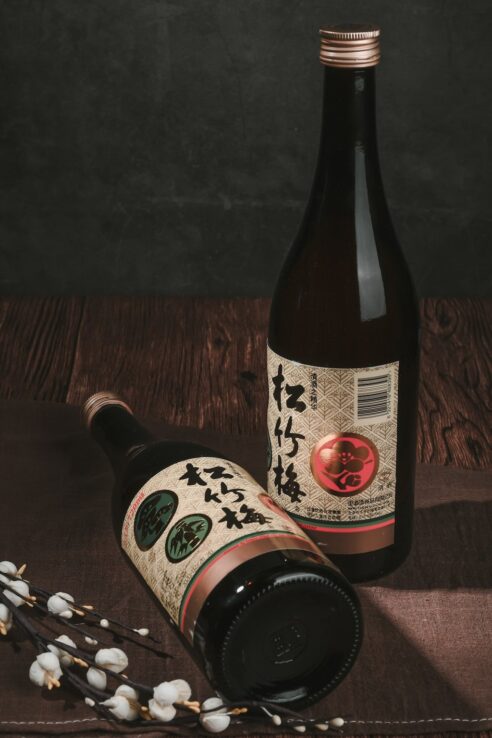A Guide To the 5 Main Types of Sake
Sake is becoming increasingly in-demand in the United States. Japanese exports to the U.S. are now at over 9 million liters a year.
Not all sake is the same. There are lots of different types out there for you to try out.
Read on to find out about the different types of sake.
What is Sake?
First, you need to understand, “What is sake?” Sake is a traditional Japanese alcoholic beverage. It’s sometimes thought to be one of the many Japanese wine types, but it’s actually a distinct beverage.
It is made through a process of fermentation, similar to the production of beer or wine. Sake is unique in that it is made from rice, water, koji (a type of mold), and yeast.
How is Sake Made?
Sake production takes several steps. First, the rice is polished to remove the outer layers, leaving behind the starchy core. The polished rice is then washed and soaked in water before being steamed.
After steaming, the rice is mixed with koji, which contains enzymes that convert the rice starches into fermentable sugars. Yeast is added to the mixture, and fermentation begins. The yeast eats up the sugar, which then converts to alcohol. This fermentation process can take several weeks to complete.
Once fermentation is finished, the liquid is separated from the solid rice particles. The liquid is then filtered and often pasteurized to stabilize the flavors. Sake can be enjoyed at various temperatures, ranging from chilled to warm, depending on personal preference and the type of sake.
Sake is known for its wide range of flavors and aromas, which can vary depending on the type of rice used, the water source, the brewing techniques, and the specific yeast strains employed. It can have characteristics ranging from light and fruity to rich and full-bodied.
Sake is an integral part of Japanese culture. It’s often drunk on special occasions. It can be enjoyed on its own or paired with a variety of foods, including sushi, sashimi, grilled meats, and even desserts.
Junmai
“Junmai” translates to “pure rice” in Japanese, indicating that no additional alcohol or sugar is added during the brewing process.
It is considered a more traditional and pure form of sake. Junmai sake tends to have a rich and full-bodied flavor with a noticeable rice character. It often exhibits earthy, nutty, and sometimes mushroom-like aromas.
The absence of added alcohol allows the natural flavors of the rice to shine through. Junmai sake can range from dry to slightly sweet, depending on factors such as the rice variety and brewing techniques.
Honjozo
Honjozo falls within the broader category of premium sake. It has a small amount of distilled alcohol added during the brewing process.
To be classified as Honjozo, the rice used must be polished to remove at least 30% of its outer layer, similar to Junmai sake. However, the addition of a small amount of distilled alcohol, typically less than 10% of the total volume, sets Honjozo apart.
Honjozo sake often exhibits a clean and crisp flavor profile with subtle notes of fruit, flowers, and sometimes spices. It can have a slightly milder rice flavor compared to Junmai sake, allowing other characteristics to come forward. Honjozo sake is typically served chilled or at room temperature, depending on personal preference.
Ginjo
Ginjo represents a higher grade of sake compared to Honjozo and Junmai sakes.
Ginjo is a premium type of sake known for its refined flavors, delicate aromas, and higher polishing ratio of the rice used in its production. It represents a higher grade of sake compared to Honjozo and Junmai sakes.
To be classified as Ginjo sake, the rice must be polished to remove at least 40% of its outer layer, exposing the inner core. The more extensive polishing process helps to eliminate impurities and proteins, resulting in a purer and more elegant sake.
Ginjo sake is brewed at lower temperatures and for a longer duration than other types of sake, allowing for a slow and controlled fermentation process. This extended brewing time contributes to the development of complex flavors and aromatic compounds.
Daiginjo
Daiginjo is an even more refined and higher grade of sake than Ginjo. The rice used for Daiginjo is polished to at least 50% or more, resulting in a very pure and elegant sake. It often has a complex flavor profile with subtle notes of fruit, flowers, and sometimes even spices.
Daiginjo is made by many different sake brands. If you want to know which is the best sake, you’ll have to consult with a sake sommelier or become one yourself.
Nigori
Nigori sake, also known as unfiltered sake or cloudy sake, is a distinct style of sake that differs from the clear and transparent appearance of most other types of sake. “Nigori” translates to “cloudy” in Japanese, referring to its milky and opaque appearance.
Unlike filtered sake, Nigori sake is intentionally left unfiltered or partially filtered during the production process. This allows some of the rice solids, yeast, and other sediments to remain in the final product. As a result, Nigori sake has a creamy, textured mouthfeel and a slightly sweet and rich flavor.
Different Types of Sake: Learn More
There’s a lot to know about how is sake made and the different types of sake.
Of course, you can’t learn everything you need to know about them just by reading about them – you need to sample them! Then you’ll be able to shop properly for Japanese wine types and different sake brands, based on your needs.
Do you want to learn more about sake? Sign up for classes at the Sake School of America today.


